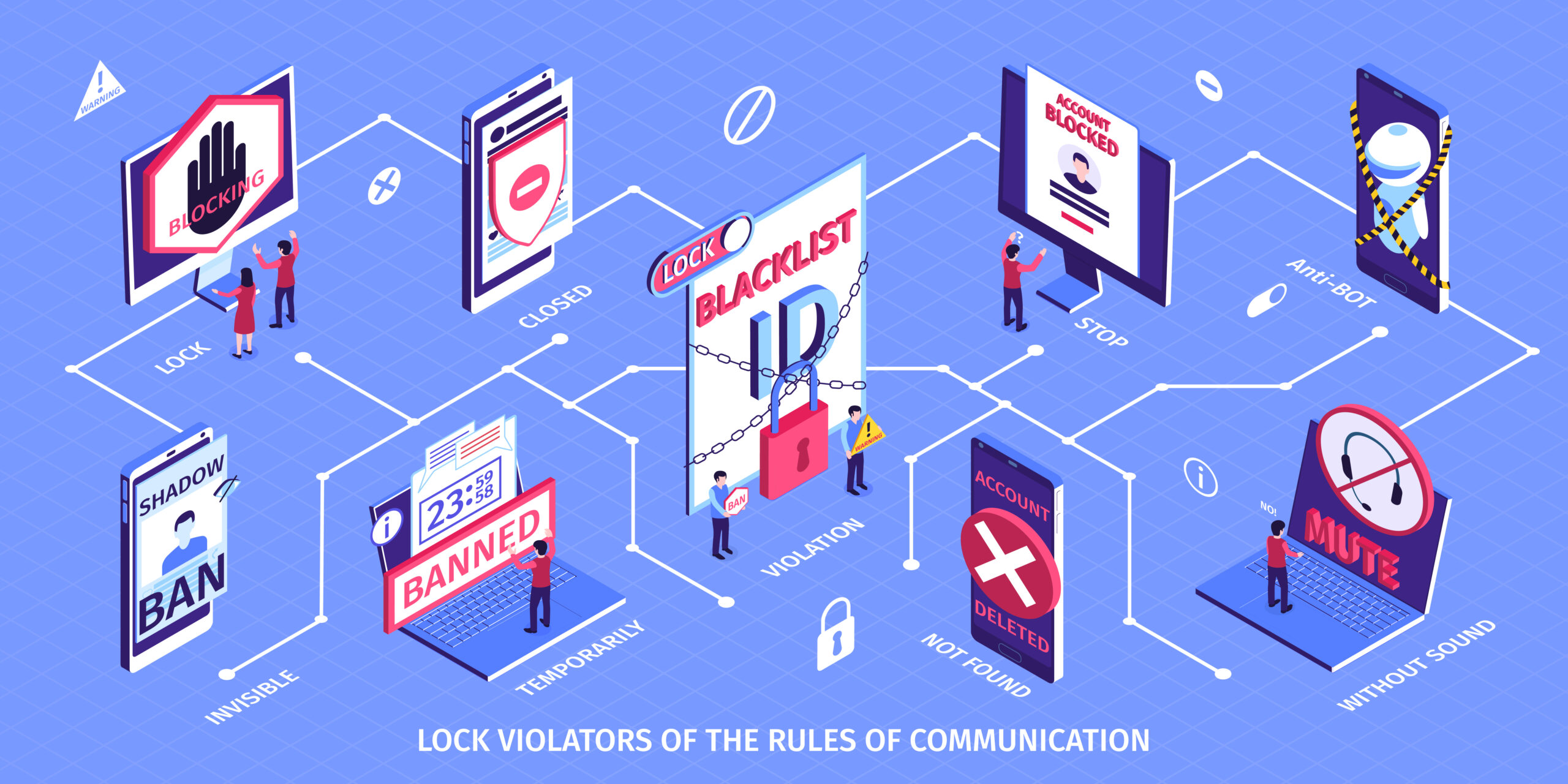Blacklist Check: A Crucial Step in AML Compliance
Blacklist Check is a fundamental process within an AML program that plays a crucial role in mitigating risks and protecting organizations from potential legal and reputational damage. Learn how AML professionals can effectively screen individuals, businesses, and countries against watchlists and blacklists to identify suspicious entities and ensure compliance with AML regulations.
 Written by Erling Andersen
Written by Erling Andersen
Welcome to our comprehensive guide on Anti-Money Laundering (AML) and the essential practice of Blacklist Check. As an AML professional, staying informed and updated about the latest tools, techniques, and best practices in the fight against financial crimes is crucial. In this article, we will delve into the intricacies of AML and provide valuable insights on performing a Blacklist Check effectively. So let’s get started and ensure that your organization stays compliant while combating money laundering.
Understanding Anti-Money Laundering (AML)
Money laundering is a process of disguising the origins of illicit funds to make them appear legitimate. As a result, criminals exploit various channels, such as financial institutions, to convert the proceeds of their illegal activities into seemingly lawful assets. To counter this threat, governments and regulatory bodies worldwide have established AML regulations and frameworks to detect, prevent, and report suspicious transactions.
The primary objective of AML is to safeguard the financial system’s integrity by identifying and disrupting money laundering activities. A comprehensive AML program involves multiple layers of defense, including customer due diligence, transaction monitoring, and reporting suspicious activities. The Blacklist Check identifies individuals, entities, or countries involved in questionable or prohibited activities among these layers.
What is a Blacklist Check?
A Blacklist Check is a fundamental process within an AML program that involves screening individuals, businesses, and countries against various watchlists, sanctions lists, and blacklists. National and international authorities, financial intelligence units, and regulatory bodies compile these lists. They contain information about individuals and entities suspected of involvement in money laundering, terrorism financing, or other financial crimes.
By conducting a Blacklist Check, financial institutions and other obligated entities can determine if their customers, business partners, or transactions are associated with any known suspicious or prohibited entities. Therefore, mitigating risks, ensuring compliance with AML regulations, and protecting organizations from potential legal and reputational damage are critical.
Performing an Effective Blacklist Check
To conduct a comprehensive Blacklist Check, AML professionals should follow a systematic approach that encompasses the following key steps:
Step 1: Access Reliable Data Sources
Accessing reliable data sources is crucial for an effective Blacklist Check. Regulatory bodies and international organizations maintain official watchlists and sanctions lists that should be consulted during screening. Examples of such lists include the United Nations Security Council’s Sanctions Lists, the U.S. Office of Foreign Assets Control (OFAC) list, and the European Union’s Consolidated List of persons, groups, and entities subject to sanctions.
AML professionals need access to up-to-date and accurate information from these sources to ensure the integrity of their Blacklist Check process. In addition, organizations can stay ahead of potential risks and compliance issues by regularly updating their databases with the latest watchlist data.
Step 2: Implement Robust Screening Software
Advanced screening software is essential to automate the Blacklist Check process and ensure comprehensive coverage. AML professionals should choose a screening solution that can integrate with their existing systems and perform real-time screening against multiple watchlists simultaneously. The software should also provide customizable risk scoring and alerts to prioritize and manage potential matches effectively.
The screening software should have robust features such as fuzzy matching algorithms to account for variations in names and entities. It should also support advanced filtering options to reduce false positives and minimize manual efforts in reviewing potential matches. By leveraging the power of technology, AML professionals can enhance the efficiency and effectiveness of their Blacklist Check process.
Step 3: Define Risk-Based Screening Criteria
AML professionals need to define risk-based screening criteria to determine the scope and frequency of Blacklist Checks. When establishing screening thresholds, customer profile, transaction amount, and geographical location should be considered. AML professionals can focus their resources on the most relevant and high-risk entities by tailoring the screening criteria to the organization’s risk profile.
Organizations should conduct a thorough risk assessment to identify the factors that increase the likelihood of encountering suspicious entities. This assessment should consider internal factors, such as the nature of the business and the customer base, and external factors, such as the countries and industries in which the organization operates. By aligning the screening criteria with the identified risks, organizations can allocate their resources more effectively and achieve a higher level of risk mitigation.
Step 4: Conduct Ongoing Monitoring
Blacklist Checks should not be limited to onboarding but include ongoing monitoring of existing customers and transactions. By implementing continuous monitoring, AML professionals can promptly detect any changes in the risk profile of their customers or partners. In addition, this proactive approach ensures that suspicious activities are identified promptly and reported as required.
Ongoing monitoring involves regularly updating the watchlist databases and comparing the existing customer and transaction data against the latest information. AML professionals should establish appropriate intervals for conducting these checks based on the risk levels associated with their customer base. By monitoring the activities of their customers throughout the business relationship, organizations can quickly identify any emerging risks and take appropriate actions to mitigate them.
Step 5: Document and Report Findings
AML professionals should maintain comprehensive records of their Blacklist Check results and any subsequent actions taken. In cases where potential matches are identified, a detailed investigation should be conducted to assess the level of risk and determine the appropriate response. If necessary, suspicious activities should be reported to the relevant authorities by local regulations and reporting obligations.
Accurate documentation is essential for demonstrating compliance with AML regulations and providing an audit trail of the organization’s efforts to combat money laundering. Maintaining clear and concise records that capture the details of the Blacklist Check process, including the sources consulted, the screening results, and the rationale behind any decisions made, is essential. Organizations can effectively respond to regulatory inquiries and demonstrate their commitment to AML compliance by maintaining proper documentation.
Final Thoughts
A thorough and effective Blacklist Check is integral to any robust AML program. By implementing the steps outlined in this guide, AML professionals can enhance their organization’s ability to identify and prevent illicit financial activities. Stay updated on the latest regulatory developments and continuously evaluate and improve your AML processes to stay one step ahead of money launderers.
Introducing Kyros AML Data Suite
Streamline Your AML Processes with Kyros AML Data Suite
At Kyros, we understand AML professionals’ challenges in conducting efficient and comprehensive Blacklist Checks. We offer the Kyros AML Data Suite, a powerful solution to streamline your AML processes and enhance compliance efforts.
Enhance Your Blacklist Check with Kyros AML Data Suite
The Kyros AML Data Suite provides AML professionals access to a vast database of watchlists, sanctions lists, and blacklists worldwide. Our advanced screening software employs cutting-edge technology to automate the Blacklist Check process, significantly reducing manual efforts and increasing accuracy. In addition, you can customize risk scoring and receive real-time alerts for potential matches, enabling you to prioritize and manage your compliance efforts effectively.
Seamlessly Integrate with Existing Systems and Workflows
The Kyros AML Data Suite is designed to integrate with your existing systems and workflows seamlessly. Whether you have in-house compliance tools or utilize third-party solutions, our flexible integration capabilities ensure a smooth implementation process. Additionally, by integrating with your existing systems, the Kyros AML Data Suite becomes an integral part of your AML program, enhancing your Blacklist Check capabilities while leveraging your existing infrastructure.
Book a Demo Today!
Book a demo with our team today to experience the power of the Kyros AML Data Suite firsthand. Discover how our solution can help streamline your AML processes, including the crucial Blacklist Check. Then, visit Kyros AML Data Suite to schedule your demo and learn more about how Kyros can help you achieve compliance, enhance security, and protect your digital assets.
FAQs
What are the potential consequences of non-compliance with AML regulations?
Non-compliance with AML regulations can result in severe consequences for organizations, including hefty fines, reputational damage, loss of business opportunities, and even criminal charges for key individuals involved.
Can an automated Blacklist Check to replace human judgment?
While automated screening solutions can significantly enhance the efficiency and accuracy of Blacklist Checks, human judgment and expertise remain crucial. Therefore, AML professionals should exercise sound judgment when reviewing potential matches and conducting investigations.
How often should a Blacklist Check be performed?
The frequency of Blacklist Checks depends on the risk profile of the organization and the nature of its operations. Generally, it is recommended to conduct Blacklist Checks during the onboarding process and regularly after that, with specific intervals determined by the organization’s risk assessment.
How does the Kyros AML Data Suite enhance the Blacklist Check process?
It provides AML professionals access a comprehensive watchlist, sanctions lists, and blacklists database. The advanced screening software automates the Blacklist Check process, significantly reducing manual efforts and increasing efficiency. In addition, it offers customizable risk scoring and real-time alerts, empowering you to manage potential matches and prioritize your compliance efforts effectively.
Can the Kyros AML Data Suite integrate with existing systems and workflows?
Our tool is designed to integrate with your existing systems and workflows seamlessly. Whether you have in-house compliance tools or utilize third-party solutions, our flexible integration capabilities ensure a smooth implementation process. Additionally, by integrating with your existing systems, the Kyros AML Data Suite becomes an integral part of your AML program, enhancing your Blacklist Check capabilities while leveraging your existing infrastructure.
Share article on
